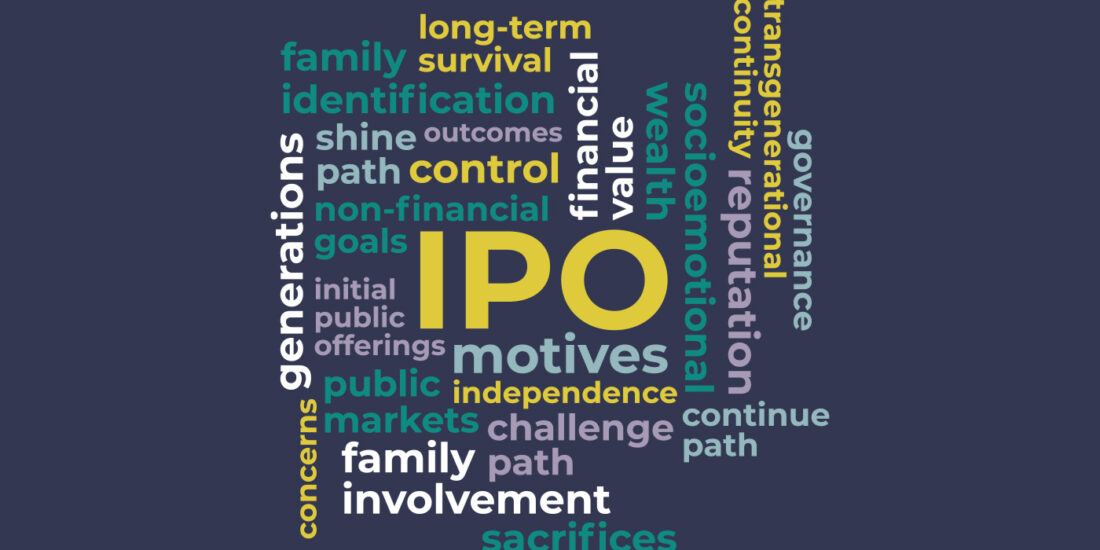Summary 3: Professionalization of Family Business and Performance Effect
(Authors: Yung-Chih Lien and Shaomin Li)
Executive Summary prepared by Nava Michael-Tsabari, Technion – Israel Institute of Technology
Grounded in the context of the emerging economies, this paper seeks to examine the professionalization of family firms and the related performance impact during the post-IPO (Initial Public Offering) stage. Specifically, the authors argue that in order to be effective, corporate governance practices should coevolve with a firm’s strategic needs as it matures. From an organization life cycle perspective, an IPO not only represents a crucial threshold in a firm’s development, but it also creates an impetus for firms to change their corporate governance structures. Family firms go public mainly because it enables them to deal more effectively with firm succession and firm professionalization, and firms that go public will have access to more financial alternatives. However, an IPO may also cast concerns: the family wants to preserve control over the firm, while non-family stakeholders want more transparency and professionalization.
The importance of this study lies in a better understanding that we gain about the post IPO stage and the influence that various stakeholders, such as the family, non-family directors, domestic banks and a non-family manager, have on the post IPO performance. The study used a sample of 205 Taiwanese public firms over 10 years (from 2000 to 2009). Taiwan is an emerging market where a significant number of publicly listed firms are still managed by their founding families.
The empirical analyses reveal that a U-shape relationship exists between the extent of family control and firm performance, whereby the positive effects of family control will diminish when the concentration of family ownership is high. Furthermore, it is found that equity stakes held by non-family directors and domestic banks have a significant and positive impact on firm performance. This indicates that block shareholders (i.e., non-family directors and domestic banks) play a crucial role in enhancing the value of mature family firms in the emerging economies.
In addition, the findings document a strong negative association between the interactions of family owners and block shareholders, and firm performance. This finding validates the governance challenges of mature family businesses in the emerging economies, as they need to harmonize these two important conflicts-of-interest among these resources (i.e., the controlling family and the block shareholders) to support the continued growth of the firm during the post-IPO stage. Contrary to the researchers’ previous arguments about the positive governance effect of professional management, the test results reveal that the bilateral interactions between non-family management and the firms’ block shareholders (i.e., the controlling family, nonfamily director, and the domestic banks) are all negatively associated with firm value. Contradicting the previous arguments targeting family businesses in advanced markets, the results of this examination reveal that professionalization may not be the best way to solve governance challenges during the post-IPO stage for mature family firms in the emerging economies.
The findings in this article have several practical implications for investors, firms, and market regulators. First, the findings can serve as a guide to help investors identify IPO firms that may yield higher potential returns. Second, since non-family block shareholders may play a significant role in the development of mature firms, it is in the firms’ best interest to retain the support of these block shareholders. Finally, excessive family control will exacerbate tensions between the controlling family and other block shareholders, and this in turn will hinder firm growth during the post-IPO stage. Therefore, market regulators should develop policies and measures to mitigate these frictions and to encourage publicly listed family firms to reform their governance structures.




